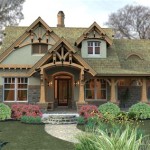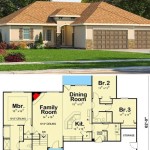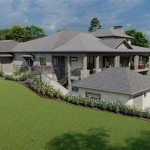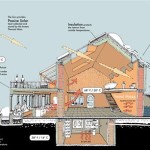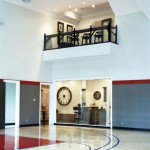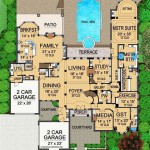Home Plans With Outdoor Living: Designing for Seamless Integration
The concept of home has evolved significantly over time. No longer is it solely defined by the enclosed space within four walls. Modern homeowners increasingly seek to extend their living areas beyond the interior, embracing the outdoors as an integral part of their daily lives. This desire has fueled the popularity of home plans with outdoor living spaces, designed to seamlessly integrate indoor and outdoor environments. These plans cater to a variety of lifestyles and preferences, offering a range of features and design elements that enhance comfort, functionality, and aesthetic appeal.
Strategic planning is essential to achieving a successful outdoor living space. The orientation of the home on the lot, the prevailing climate, and the desired activities all influence the design process. Careful consideration must be given to factors such as sun exposure, wind patterns, and privacy. Thoughtful design choices can mitigate potential drawbacks and maximize the benefits of the outdoor environment. Home plans with outdoor living are not merely about adding a patio or deck; they are about creating a holistic living experience that blurs the lines between inside and outside.
Homeowners should contemplate the intended use of the outdoor space to determine the appropriate design elements. A family with young children may prioritize a large, grassy area for play, while empty nesters might prefer a more sophisticated outdoor dining and lounge area. Individuals who enjoy cooking and entertaining will often incorporate outdoor kitchens and bars. The possibilities are vast, and the design should reflect the homeowner's specific needs and lifestyle.
Understanding different architectural styles and how they lend themselves to outdoor living is also beneficial. For instance, a Craftsman-style home might feature a covered front porch and a rear deck with built-in seating, while a modern home might boast expansive glass walls that open onto a minimalist patio. The architectural style of the home should complement the design of the outdoor living space to create a cohesive and harmonious aesthetic.
Key Considerations: Site Analysis and Planning
A comprehensive site analysis is the foundational step in designing a home plan with optimal outdoor living. This analysis involves evaluating various aspects of the property, including topography, soil conditions, sunlight exposure, wind patterns, and existing vegetation. Understanding these factors is crucial for making informed decisions about the location and design of outdoor spaces.
Topography plays a significant role in determining the feasibility and cost of construction. Sloped sites may require extensive grading and retaining walls, while level sites offer more flexibility. Soil conditions affect the stability of foundations and the suitability of landscaping. Soil testing can identify potential drainage issues and inform the selection of appropriate plant species.
Sunlight exposure and wind patterns are important considerations for thermal comfort. Orienting outdoor spaces to maximize exposure to sunlight during the cooler months and minimize exposure during the warmer months can significantly improve year-round usability. Windbreaks, such as trees or shrubs, can help to reduce wind chill and create a more comfortable environment. Furthermore, careful landscaping can create microclimates that enhance the overall outdoor experience.
Existing vegetation can provide shade, privacy, and aesthetic appeal. Preserving mature trees and shrubs can add instant character to the landscape and reduce the need for extensive new plantings. However, it is important to consider the potential impact of existing vegetation on the foundation and utilities. A professional arborist can provide guidance on tree care and potential hazards.
Privacy is another critical factor to consider during site analysis. Homes located on busy streets or adjacent to densely populated areas may require additional screening to create a sense of seclusion. Fences, walls, and strategically planted vegetation can effectively block unwanted views and reduce noise pollution. The level of privacy desired will influence the choice of materials and the design of outdoor spaces.
Designing for Functionality and Flow
Effective outdoor living design prioritizes functionality and seamless flow between indoor and outdoor spaces. The goal is to create a cohesive living area that feels like a natural extension of the home. This requires careful consideration of the layout, materials, and accessibility of outdoor spaces.
The layout of outdoor spaces should reflect the intended activities and lifestyle of the homeowners. For example, an outdoor kitchen should be located near the indoor kitchen to facilitate the transport of food and supplies. A seating area should be positioned to take advantage of scenic views and provide comfortable seating for relaxation and conversation. A dining area should be large enough to accommodate family and guests, and should be conveniently located near the kitchen and grill.
The choice of materials is crucial for both durability and aesthetic appeal. Outdoor materials should be weather-resistant and low-maintenance. Common materials for patios and decks include concrete, stone, brick, wood, and composite decking. Furniture should be durable and comfortable, and should be designed to withstand the elements. Fabrics should be fade-resistant and water-repellent.
Accessibility is another important consideration. Outdoor spaces should be easily accessible from the interior of the home. Wide doorways and ramps can provide access for individuals with mobility limitations. Pathways should be clear and well-lit to ensure safety. Handrails should be installed on steps and slopes to prevent falls. The Americans with Disabilities Act (ADA) provides guidelines for accessible design that can be applied to outdoor spaces.
Lighting plays a crucial role in creating a welcoming and functional outdoor environment. Landscape lighting can highlight architectural features, illuminate pathways, and create ambiance. Task lighting can be used to illuminate outdoor kitchens and dining areas. String lights and lanterns can add a touch of whimsy and romance. The lighting design should be carefully planned to avoid light pollution and minimize energy consumption.
Maximizing Comfort and Enjoyment
Creating a comfortable and enjoyable outdoor living space involves addressing factors such as temperature regulation, pest control, and noise reduction. Various strategies can be employed to mitigate potential discomforts and enhance the overall outdoor experience.
Temperature regulation is essential for year-round usability. Shade structures, such as pergolas, awnings, and umbrellas, can provide relief from the sun during the summer months. Outdoor heaters and fire pits can provide warmth during the cooler months. Ceiling fans can circulate air and create a cooling breeze. Strategic landscaping can provide shade and block wind, further enhancing thermal comfort.
Pest control is another important consideration. Mosquitoes, flies, and other insects can be a nuisance and can transmit diseases. Screening can be used to enclose outdoor spaces and keep insects out. Citronella candles and mosquito repellents can provide temporary relief. Removing standing water and maintaining a clean environment can help to reduce mosquito breeding. Planting insect-repelling plants, such as lavender and rosemary, can also be effective.
Noise reduction is important for creating a peaceful and relaxing outdoor environment. Fences, walls, and vegetation can help to block unwanted noise from traffic, neighbors, and other sources. Water features, such as fountains and waterfalls, can create a soothing soundscape and mask unwanted noise. Strategic placement of outdoor spaces away from noisy areas can also help to minimize noise pollution.
The integration of technology can further enhance the outdoor living experience. Outdoor televisions and sound systems can provide entertainment. Smart lighting and irrigation systems can automate tasks and conserve energy. Wi-Fi access can allow homeowners to work and stay connected while enjoying the outdoors. The key is to integrate technology seamlessly into the design without detracting from the natural beauty of the outdoor environment.

Luxury Modern Home Plan With Expansive Outdoor Living Spaces And Pool Concept 871012jen Architectural Designs House Plans

Modern House Plans With Outdoor Living Houseplans Blog Com

House Plans With Great Outdoor Living Spaces Dfd Blog

House Plans Outdoor Living Spaces Popular Feature In New Home Designs The Designers

Traditional Farmhouse Home Plans With Wrap A Around Porch

Plan 56408sm 4 Bed Acadian With Generous Outdoor Living Space House Plans Country New

Plan 56541 One Story Style With 3 Bed Bath 2 Car Garage Family House Plans Courtyard Blueprints

Indoor Outdoor Home Plans

Unique Courtyard House Plans With Outdoor Living Dining

Stunning Indoor Outdoor Living


